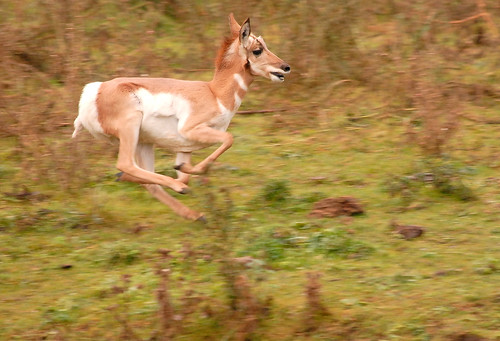Malpai Borderlands Group - an Early Inspiration for PLN
By: Amos S. Eno
Posted on:06/22/2010 Updated:06/28/2010Ranchers in southeast Arizona at the Mexican Border have learned - sometimes the hard way - that they are “attached to the rest of the world.”
In the southwest corner of Arizona, at the border of New Mexico and the Mexican state of Sonora, lies an area renowned for its rugged beauty - a world edged with violence and brought eloquently to life in Cormac McCarthy’s book, The Crossing.
It is here that the first photograph of a wild jaguar in the U.S. was taken, a temporary immigrant from its core breeding area located 140 miles to the south. It is here that the Malpai Borderlands Group, or MBG - renowned in ranching and conservation circles - was founded 16 years ago by and for ranchers, to help them regain stewardship control of their land and protect their heritage.
Ranch Stewardship Leads to Endangered Species Management
The precipitating incident for the formation the MBG was a wildfire, which did not pose a hazard of spreading, that ranchers
believed needed to burn. Instead, authorities insisted on quenching the fire. Like the Native Americans in many parts of the West before them, Malpai ranchers had come to recognize that fire was essential to their range. Mesquite and juniper were overtaking their grasslands, threatening a kind of slow starvation.
The Malpai Borderlands Group’s self-described purpose in 1994 was “maintaining or increasing the health of our rangeland, and keeping our ranching livelihoods.” Their website today describes their activities as “attempting to implement ecosystem management on nearly a million acres of virtually unfragmented open space landscape in Southeastern Arizona and Southwestern New Mexico.”
They have protected 75,000 acres from subdivision through the execution of conservation easements; they have sponsored long-term e
 cological studies; and they have developed habitat improvement programs for endangered species, such as the Chiricahua Leopard Frog and the Lesser Long-nosed Bat. The ranchers of Malpai country, like so many indigenous peoples before them, know that, in the words of John Muir, "when one tugs at a single thing in nature, he finds it attached to the rest of the
world."
cological studies; and they have developed habitat improvement programs for endangered species, such as the Chiricahua Leopard Frog and the Lesser Long-nosed Bat. The ranchers of Malpai country, like so many indigenous peoples before them, know that, in the words of John Muir, "when one tugs at a single thing in nature, he finds it attached to the rest of the
world."
Inspiration from the Malpai
I had the good fortune to experience Warner and Wendy Glenn’s hospitality at their Malpai Ranch, from which the group took its name, in 1998 while serving as the National Fish and Wildlife Foundation’s (NFWF) director. Glenn, along with Bill McDonald, the Group’s Executive Director, invited me to a board meeting and took me on a sure-footed mule ride through the steep country they call home. NFWF went on to give many grants to the MBG over a period of about seven years, and though I didn’t realize it then, that visit was one of the formative moments in my career trajectory toward the establishment of the Private Landowner Network.
Bill recently updated PLN on Malpai’s successes and the new threats they face. Collaborating with federal and state officials, MBG succeeded in developing a prescribed fire plan for their area, and it’s working. “The landscape has definitely changed,” Bill says, “and the grasses have responded.” Hundreds of miles of old fence have been replaced with wildlife-friendly steel fences that allow pronghorn to cross underneath and deer to safely jump over.
The MBG invented the concept of grass banking, in which conservation easements could be paid for, not with cash, but with grazing privileges. Though the Animas Foundation of New Mexico stopped this program several years ago, the grass bank did allow partic
ipating ranchers to bounce back from stocking levels that, in hindsight, had been too high to handle multiple years of drought and had damaged their land.
A study by Nathan Sayre, Assistant Professor of Geography at Berkeley and author of the book Working Wilderness, has found that ranchers who received grass bank privileges seem to have put more back into their ranches than those who were paid cash. As Bill says, “they got a perspective on their ranch they’d never had before because they had cattle off of it.”
A New Type of Threat to the Range
Changes that have affected everyone in the past few years - the economy, land values - have changed the view from southwestern Arizona, but nothing so much as the tragedy that occurred the morning of March 27, this year.
To be continued next week...
 Sign In
Sign In
 Sign In
Sign In
